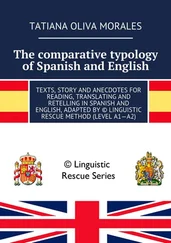1 ...6 7 8 10 11 12 ...18 A major hazard approach is relevant to all types of structures, but for marine systems related to floating structures, many of these hazards and controls relate to factors such as ballast controls and weight distribution, which can change on a daily basis.
UK HSE commissioned Atkins to prepare a report providing an overview of the required structural integrity management for fixed offshore structures (HSE 2009). The aim of the programme was to develop a comprehensive framework, as illustrated in Figure 7, for the structural integrity management (SIM) of fixed jacket structures based on HSE’s technical policy in this area. The framework was seen as a mechanism for communicating good industry practice and hence to encourage continual improvement in performance. The inspection strategy and programme, information management, evaluation and sub‐sea intervention feature prominently.

Figure 7 Elements of Structural integrity management, based on HSE (2009).
Source: Based on HSE (2009), HSE RR684 ‐ Structural integrity management framework for fixed jacket structures, Health and Safety Executive (HSE), London, UK.
In addition, the report provided guidance on how to implement the framework. The document had been developed largely on the basis of existing standards and industry published documents including ISO 19902 (ISO 2007), API RP‐2SIM (API 2014b) and PAS 55‐1 (BSI 2008).
2.2 Examples of Country Statutory Requirements
2.2.1 Introduction
The US took a lead in the development and regulation of the offshore industry, as the Gulf of Mexico was well developed as early as the 1960s when the first edition of API RP‐2A was issued. When other countries were developing offshore structures there was a lack of appropriate local design standards. As a result, API RP‐2A became the default used as the basis for design of such structures around the world. By the end of the 1970s, some local standards and codes were introduced. The most notable of these were the issue of the UK Department of Energy Guidance Notes and the Norwegian Petroleum Directorate Rules.
In addition, several ship classification societies became involved in the offshore industry and released appropriate rules, some based on API RP‐2A. These included American Bureau of Shipping, Det Norske Veritas and Lloyds Register. Many mobile offshore structures have a class certificate provided by one of these leading Classification Societies, where inspection has been an important part of the class system and regulation, which has been developed over many years of experience by owners, regulators and class societies.
2.2.2 Regulation in the US Offshore Industry
The oil and gas activities in the US are regulated by the governmental organisation Bureau of Safety and Environmental Enforcement, BSEE (previously Mineral Management Service, MMS and for a short period, the Bureau of Ocean Energy Management, Regulation and Enforcement, BOEMRE). In general, these have relied heavily on recommended practices by the American Petroleum Institute (API).
API issued in 1969 its first recommended practice of RP‐2A for the design of offshore structures (API 1969), with the first set of design procedures for the offshore industry. This recommended practice has been continuously updated since with respect to wave criteria (e.g. moving from a 25‐year criterion to a 100‐year return period) and design formulae for tubular joints.
The 22nd edition of API RP‐2A (API 2014a), issued in 2014, saw the introduction of a supplement named API RP‐2SIM (API 2014b) aimed at structural integrity management, which addressed the ongoing integrity management of the structures, an increasingly important matter. In 2019 API in addition published recommended practises on the integrity management of floating systems API RP‐2FSIM (API 2019a) and mooring systems API RP‐2MIM (API 2019b).
2.2.3 Regulation in the UK Offshore Industry
From 1974 until June 1998, the UK certification regime required the issue of a certificate of fitness every five years by legislation Sl 289, enacted in 1974 (Department of Energy 1974). This was the basis for the regulation of the safety of offshore structures in the UK sector of the North Sea. It was supported by published Guidance Notes, which included specific sections on design, construction, surveys and repairs (Department of Energy 1990). Most of the structures in the North Sea were designed, fabricated, installed and operated in this regime until 1996. The 4th edition of the Guidance Notes had extensive sections on both surveys and repairs. These are reviewed later in this book.
Following the Cullen report on the Piper Alpha disaster (Cullen 1990), a major change in the regulatory regime affecting structural integrity and safety issues for offshore installations was implemented in 1995 with the introduction of the Safety Case Regulations (HSE 2005) in 1995 and the Design and Construction Regulations (DCR) in 1996 (HSE 1996). As a result, all installations operating in the UK sector of the North Sea are now required to have an accepted safety case which needs to demonstrate that all hazards with the potential to cause a major accident have been identified, that the risk has been evaluated and that measures have been or will be taken to reduce the risk to a level that is as low as reasonably practicable (ALARP).
Hazards can arise for structures as a result of inadequate design, poor fabrication or potential failure of materials (e.g. brittle fracture and fatigue) and hence good design and fabrication, as well as effective materials selection, are part of the risk reduction process. ln addition, there is a requirement for the provision of a safety management system which demonstrates that the key factors for health and safety management—as identified in, for example, HSG65 (HSE 2013)—are in place.
The DCR introduced the concept of lifetime integrity. An important requirement is to ensure that as far as reasonably practicable, in the event of reasonably foreseeable damage, the installation will retain sufficient integrity to enable action to be taken to safeguard the health and safety of persons on or near it. The retention of residual integrity in the case of damage, such that evacuation can proceed as required, is an important aspect of this. Certain elements in the structure are safety critical and hence are deemed to be “safety critical elements” (SCEs) in the modified Safety Case Regulations HSE (2005).
For North Sea structures on the UK continental shelf (UKCS), preparation of an inspection plan is now a requirement of Regulation 8 of the DCR. This requires that the duty holder ensures that suitable arrangements are in place for maintaining the integrity of the installation, through periodic surveys and assessments and carrying out any remedial work in the event of damage or deterioration. Previously, the guidance (Department of Energy 1990) provided recommendations for the frequency of surveys during the five‐year period of the certificate of fitness, including its renewal, on the UKCS. This renewal period tended to determine the inspection schedule.
The Department of Energy Guidance (Department of Energy 1990) and also API RP‐2A (API 2014a) have been important sources of design information for a wide range of structural components. From 1998, however, the Department of Energy Guidance is no longer being maintained by HSE and an ISO standard for offshore structures, ISO 19902 (ISO 2007), is now the recognised standard for the UK. The ISO standard includes a substantial new section on structural integrity management and in‐service inspection which provides an international framework for this subject. The ISO procedure covers both in‐service inspection and structural integrity management, including collation of platform and inspection data and their evaluation to develop an inspection plan.
Читать дальше













